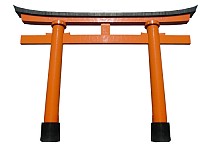 We have all heard the phrase “Culture eats strategy for lunch (or breakfast, or dinner).” But what exactly does it mean and what, as a business leader, can you do to improve your organization’s culture?
We have all heard the phrase “Culture eats strategy for lunch (or breakfast, or dinner).” But what exactly does it mean and what, as a business leader, can you do to improve your organization’s culture?
Every morning when I logged onto my system at Merrill Lynch I saw their well-known “bull” logo and the words “A Performance Driven Culture.” They are driven by performance. Big producers, wealthy clients, and large deals are all part of who they are and what they project. That culture can help and it can hurt. Their aggressive posture led to significant financial troubles in the market downturn of 2008; in bull markets, though, they tend to fare far better. Other companies, as I have witnessed, value consistency of service. The $500,000 mortgage client and the $2 million investment services client get the same touch as the newly opened savings account for the kid that mows lawns in the summer. Again, that culture can help and it can hurt. The high-value accounts may feel like they’re getting enough attention; on the other hand, small-value customers may be more inclined to recruit others or to stay longer. In both of the cases I’ve outlined here, the organization’s culture usually dictates its strategy. When it doesn’t (when strategy isn’t shaped by culture), customers and employees tend to get thrown by the bull.
So, what is your culture? How do you describe it to friends or acquaintances who have no stake in the matter? Is it clear and consistent to both customers and employees?
The following three tips will help you maintain a strong culture or improve one that seems inconsistent or lacking:
1. Align employees’ core values with the organization’s
One of the first activities that we conduct with a new coaching client at CO2 Partners is a values assessment. Values are those things that you define to be non-negotiable. They are different for every person and every organization. When organizational values align with employees’ personal values then great things can happen. Misalignment will cause stress and conflict that consumes energy and holds you back from attaining goals–personal and organizational. In “Working without a Net: How to Survive & Thrive in Today’s High Risk Business World,” Morris Shechtman says that goals are where you are going and values are how you’re going to get there. He’s right. If employees’ values don’t align with the organization’s then begin moving them out and bringing in people whose values do align.
2. Hire around your culture, not the technical needs of the position
CarterBaldwin has a process that they define as “The Five P’s: A Client Assessment for Matching Culture” (a PDF can be found here). Those five P’s are: Power, Push, Pace, Play, and Principles. The sales process at one company might be quite a bit different than the sales process at another company. As a matter of fact, the mere mention of the word “sales” or “sales training” may invoke a strong, negative leadership reaction–we don’t “sell” to our customers–even though a need is identified, a product is offered, and a purchase is made. Be very clear about the cultural fit that you seek not just the technical aspects of the position.
3. Discover and address your cultural blind spots
One of your cultural strengths may lead to a blind spot or weakness. If your organization values respect and decorum highly, for instance, it may not be well-equipped to handle conflict or emergencies. The hierarchical nature of the Korean people meant that somebody of a lower status (the co-pilot) would always defer to the decisions of somebody of a higher status (the pilot) at Korean Air Lines. Further investigation showed that, at times, co-pilots were completely disengaged with the operations of the flight deck. This disengagement led to loss of life and equipment. Complex systems, like modern aircraft, require a team effort to operate. Align your organization around common values, but make sure you discover and address your cultural blind spots, so that you can avoid potential crashes.



